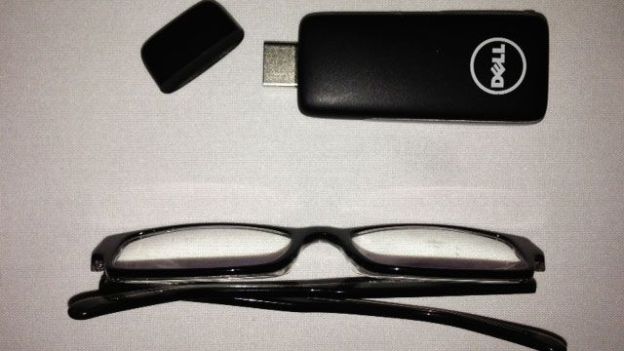
After making appearances at both CES and Mobile World Congress earlier this year, Dell’s ambitious mini-PC Project Ophelia will finally be ready for consumers later this summer.
Project Ophelia is a computer, about the size of a USB drive, that can plug into anything with a HDMI socket – a high-definition television, monitor, or projector – to turn it into a full-fledged computer. But don’t let its diminutive size fool you: it’s got as much computing power as a smartphone. After all, it’s powered by a 1.6GHz dual-core Cortex A9 processor, has 8GB of internal storage, Wi-Fi, Bluetooth, and a microSD card slot so you can easily sideload or transfer content.
Since this mini-PC runs Android Jelly Bean (build 4.1.2), you can access all the apps you’re used to through the Google Play store. Want to watch a movie in your hotel room but don’t have your laptop or tablet? Just plug Ophelia into the HDTV in your room, download the Netflix app, and start streaming The Avengers. Need to edit a Powerpoint presentation to send to a colleague while on vacation? All you have to do is plug Ophelia into a screen with an HDMI input, then hop onto the wireless network to access your files stored on Google Drive or Wyse’s PocketCloud.
Although this sub-$100 USB-sized PC doesn’t come with a dedicated input device, you can pair it with any third-party Bluetooth keyboard and mouse thanks to its built-in Bluetooth. Dell is aware that it needs to offer users a decent navigation experience if it wants to market Project Ophelia as a viable PC alternative. That’s why the company is already working on a “keyboard-like technology for users to type when Ophelia is docked to a screen,” as Dell’s Jeff McNaught told PCWorld.
Android developers who are interested in making apps for Ophelia will be getting their hands on the mini-computer in July, while cable and telecom companies who may bundle the device with their service will get Ophelia in August. Consumers who are eager to get this Android-based mini-PC should be able to order Project Ophelia direct from Dell’s website later this summer.


